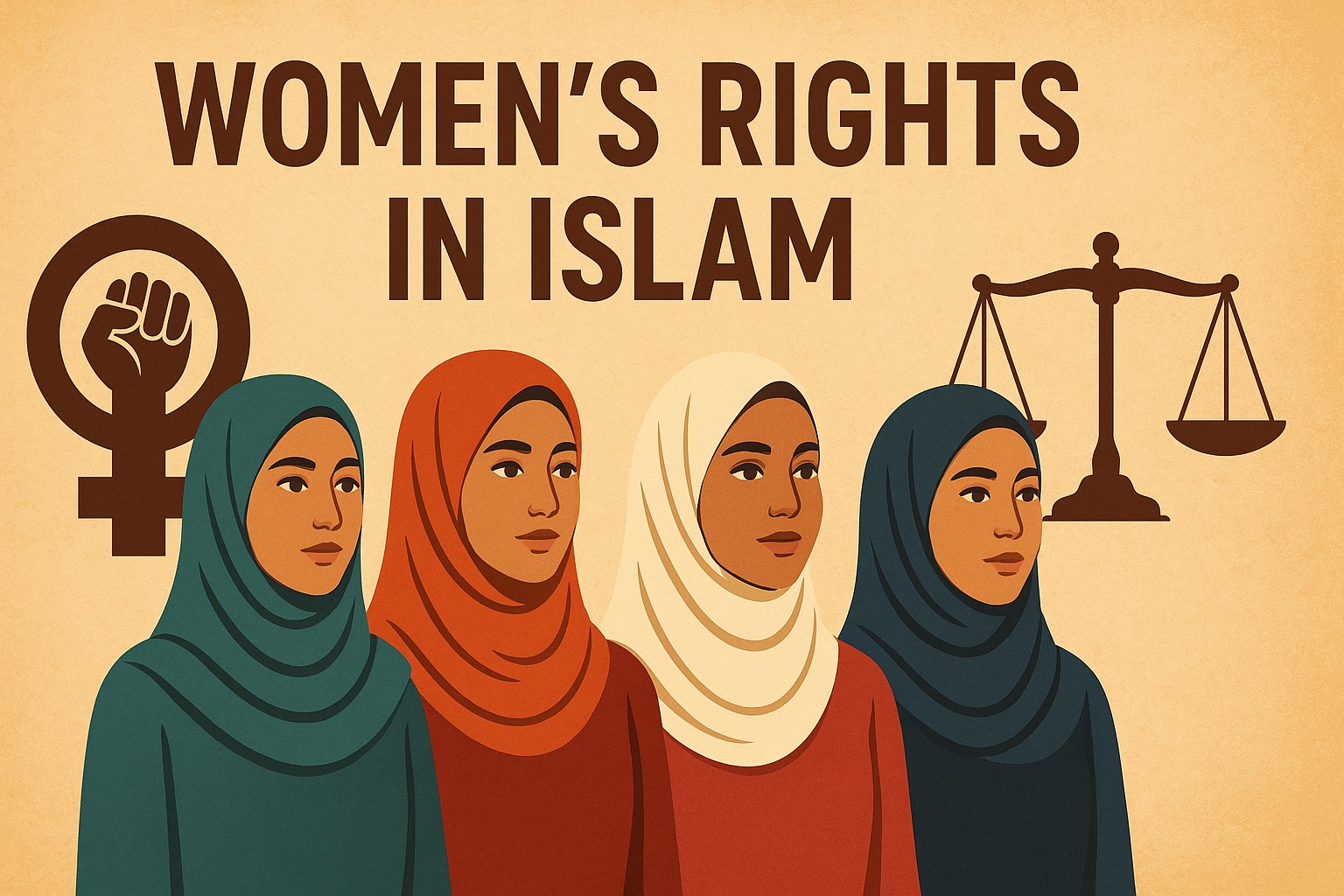
Beyond the Binary: Islam, Women’s Rights, and the Western Mirror
Why This Comparison Matters
Conversations about Islam and women’s rights often erupt into headlines and hashtags, yet they rarely pause to define terms or context. When people ask about “Islam women’s rights vs West,” they often compare scripture to practice, ideals to policies, or individual experiences to national laws—all at once. That approach obscures more than it reveals. A clearer discussion starts with a careful framing: What do we mean by Islam? Which West? Which slice of history or law?
Islam is not a single cultural bloc, and “the West” is not a monolith. Islam refers to a faith tradition rooted in the Qur’an and the Prophetic model, interpreted across diverse legal schools and cultures. Meanwhile, “the West” covers a spectrum of societies shaped by liberal, secular, and Judeo-Christian legacies, each with its own reforms and contradictions. This article explores sources, history, and lived realities—highlighting convergences, divergences, and pathways that center dignity, safety, and agency.
Setting the Terms — Religion, Culture, and Law
Any meaningful comparison must separate religion from culture and law. In Islam, women’s rights derive from foundational texts, juristic interpretation, and evolving application. Yet Muslim-majority societies vary widely in how they translate those principles into policy. For example, Tunisia bans polygyny, Morocco overhauled family law in 2004, and Pakistan’s Family Laws Ordinance imposes procedural checks on polygyny. These reforms arise from within Islamic legal discourse, not outside it.
By contrast, Western systems typically frame women’s rights through secular constitutional law, human rights instruments, and civil legislation. However, practice still lags behind principle. The gender pay gap persists, intimate partner violence remains a crisis, and legal protections vary by jurisdiction. A more accurate lens is “Islamic legal ethics and their application” versus “Western legal ethics and their application,” rather than broad civilisational generalisations.
Foundational Values — What the Sources Actually Say
Islam’s core texts articulate vision and limits: dignity (karamah), protection of life and property, and justice (adl). The Qur’an established, for its seventh-century context, explicit rights for women: inheritance shares, the right to own and manage property, and the right to a gift (mahr) under a binding marital contract. The Prophetic biography and hadith literature emphasize consent in marriage, mutual kindness, and accountability for abuse. These are not marginal notes; they are central.
Western rights frameworks typically draw from natural law, Enlightenment thought, and modern human rights charters. They foreground individual liberty, equality before the law, and state neutrality toward religion. This orientation has driven significant progress: women’s suffrage, marital rape criminalisation, workplace protections, and anti-discrimination statutes. Still, legal equality does not automatically produce social equity; institutions and norms can stall change or reproduce bias, just as in Muslim-majority contexts.
History in Perspective — Who Was Ahead, When?
Islam’s early reforms granted women secure inheritance rights, contractual agency in marriage, and recognised ownership of property. In Europe, coverture rules often subsumed a wife’s legal identity under her husband well into the 19th century. English Married Women’s Property Acts (1870, 1882) and similar reforms elsewhere arrived comparatively late. These contrasts complicate simplistic narratives that cast one civilisation as perpetually progressive and the other as perpetually regressive.
But modernity has not been linear for either sphere. Colonial entanglements, codification, and social upheavals reshaped legal norms across the Muslim world. Western societies also reformed family law, expanded educational access, and advanced gender parity in political life. Sweeping judgments ignore centuries of internal debate, social movements, and shared reform trajectories.
Marriage, Consent, and Divorce — Rights in Practice
Marriage in Islamic law is a contract that confers reciprocal rights and responsibilities. The mahr belongs to the bride; she retains her own property and has the right to fair maintenance. Consent is pivotal: forced marriage is invalid in mainstream jurisprudence, and several legal schools acknowledge an adult woman’s agency to contract marriage—with or without a guardian—though practice and statutes vary by country.
Divorce mechanisms also differ. In Islam, a husband may initiate talaq; a wife may seek khul’ (a no-fault dissolution typically involving return of the mahr) or pursue judicial annulment for harm, abandonment, or breach of contract. Contemporary reforms often aim to balance these pathways—requiring documentation, setting waiting periods, or mandating arbitration to safeguard against misuse. Western systems, meanwhile, use civil courts and largely no-fault divorce regimes. Both frameworks face practical challenges in financial inequities, custody disputes, and emotional fallout.
Work, Education, and Leadership — Beyond Stereotypes
Islamic legal theory affirms the right of women to education and economic participation. Historically, women transmitted hadith, funded public works, and contributed to scholarship. Today, women’s university enrollment is high in many Muslim-majority states; in places like Qatar and the UAE, women represent a majority in higher education. Whether those credentials translate into leadership roles and fair pay often depends on interpretation and policy—not faith itself.
In the West, legal protections exist, but institutional barriers persist. Women’s advancement into senior roles still lags, and persistent care burdens compound wage disparities. Several Muslim-majority nations have had women heads of government or state—Bangladesh, Pakistan, Indonesia, Turkey—proving that religious identity alone does not preclude female leadership.
Modesty, Autonomy, and the Meaning of Choice
Debates around dress spotlight a deeper issue: who decides? For Muslims, hijab can be both a spiritual practice and a social marker; experiences range from empowered choice to coercion. The Prophetic model emphasizes modesty for all genders and freedom from compulsion. When policy veers toward compulsion—whether mandating what women must wear or banning it—women’s agency suffers.
Western bans on headscarves and mandatory dress codes in some Muslim-majority states mirror each other in one respect: both displace women’s choice with state control. True autonomy requires women to define their expression of faith and identity without fear of sanction. Legal frameworks should prioritize freedom of conscience and safety from discrimination—principles consistent with both Islamic ethics and human rights law.
Justice, Violence, and the Duty to Protect
Both Muslim-majority and Western societies face persistent threats to women’s safety—domestic violence, trafficking, online abuse. Islamic ethics impose a duty to prevent harm (darar) and uphold sanctity (hurmah). Western legal norms mandate protection too, but service gaps and stigma can silence victims. Effective protection requires not just laws but trained systems, survivor-centered services, and cultural competence.
Scholars and counselors increasingly approach contentious texts with holistic readings anchored in prophetic character, emphasizing compassion and justice. Many Muslim-majority countries have domestic violence statutes and family courts, though implementation remains uneven—just as Western systems have their own gaps. Cross-sector collaboration can help close these gaps.
The Digital Age — Safety, Consent, and Dignity Online
Modern life pushes courtship and community online, where risks multiply. Romance fraud, coercion, and identity theft cause real harm. In 2024 alone, UK victims reportedly lost over £100 million to romance scams. Islamic values of trust (amanah) and respect apply online as much as offline. Ethical design and robust verification can reduce harm without infantilizing adults.
For instance, Muslim Marriage Services integrates biometric verification through Yoti, offers optional mahram monitoring (DynamIQ Guardian), and enables secure, guardian-optional profile sharing (ProfileShield). This blends Islamic ethics with modern safety standards.
Marriage Literacy — Rights, Responsibilities, and Realistic Expectations
Rights only work when people understand them. Islam frames marriage as a covenant of mutual kindness (rahmah) and cooperation. That requires communication, financial literacy, conflict resolution, and knowledge of legal and religious rights. Pre- and post-marital education equips couples to set expectations, negotiate roles, and recognize early warning signs of harm.
Western contexts also benefit from relationship literacy. Initiatives like premarital counseling and financial planning improve marital stability. MMS and similar programs pair education with ongoing support—so couples are not left alone after the wedding day.
Economics, Equity, and Financial Barriers
Across societies, financial pressure delays marriage and strains family life. Islamic law acknowledges this through mahrand maintenance obligations, adaptable through mutual agreement. But cultural pressure for extravagant weddings can price out young adults. Community funds, microgrants, and modest ceremonies can ease this.
In Western contexts, student debt and high living costs create similar pressures. Equitable partnerships—transparent budgeting, shared planning—become vital. Social enterprises that reinvest in marriage education and support funds can make intentional marriage more accessible.
Intimacy, Divorcees, and Unspoken Realities
1. Divorced Women Are Chaste
A toxic myth persists that divorced women are “soiled” or less worthy. This is profoundly un-Islamic. As Village Auntie reminds us, “You’re not out here on the streets having extra marital affairs.” The Prophet ﷺ married several women, all but one of whom were divorcees. To stigmatize divorced women is to ignore the sunnah itself.
2. Sex ≠ Intimacy
Many confuse sex with intimacy, but they are not the same. Intimacy is closeness—emotional, intellectual, spiritual—which can exist in platonic relationships. Sex is a physical act. A couple can have great sex but poor intimacy, or vice versa. Healthy marriages thrive on both.
3. Discuss Intimacy Before Marriage
It is not haram to have appropriate, respectful conversations about intimacy before marriage. Discuss expectations like date nights, emotional closeness, or how soon sex might happen after the wedding. Avoid explicit details, but make sure both partners are on the same wavelength.
4. The Wedding Night Myth
Contrary to movie portrayals, the wedding night is rarely perfect. Many couples are exhausted and may not even consummate the marriage that night. That’s okay. There is no obligation to perform. Comfort, consent, and mutual readiness matter more than cultural pressure.
5. Sexual Fulfilment Matters
If a woman is not sexually fulfilled, she has the right to raise the issue and, if needed, seek divorce—though counselling or honest conversation is encouraged first. Islam recognises sexual rights for both partners.
6. Consent in the Bedroom
A woman is not obligated to participate in acts she finds uncomfortable. Difficult conversations may require counselling, but boundaries must be respected.
7. A Baby Won’t Fix a Relationship
A child should never be used to “fix” a marriage. If you’re not ready, it’s valid to say so. Parenthood requires shared responsibility, not pressure or guilt.
8. Men: Your Wife Is Not Secondary to Your Mother
Respect for parents is essential, but not at the expense of a wife’s dignity. A man must balance duties wisely. Islam places great weight on a husband’s responsibility to protect and care for his wife.
Common Myths — A Quick Review
-
Myth: Islam uniformly restricts women’s public roles.
Reality: Texts and history show women’s active participation; cultural norms, not faith, impose limits.
-
Myth: The West has “solved” women’s rights.
Reality: Progress is real, but inequities remain.
-
Myth: Islamic law ignores consent.
Reality: Consent is essential; forced unions are invalid.
-
Myth: Dress control equals liberation.
Reality: Compulsion—ban or mandate—undermines agency.
A Way Forward — Bridging, Not Battling
We don’t need a civilizational clash. We need principled convergence. Scholars and practitioners should foreground shared values: dignity, consent, accountability, compassion. Policymakers must engage women and communities in shaping laws that protect without stereotyping. And education—especially around intimacy, consent, and rights—must be centered, not sidelined.
Technology platforms must treat safety as a core feature. Verified identities, optional guardianship, and privacy-first design build trust without sacrificing autonomy. This honors both Islamic ethics and modern human rights.
Conclusion: Beyond Versus — Toward Principled Convergence
Comparisons of “Islam and women’s rights vs West” often flatten complex realities. A closer look reveals shared struggles and overlapping goals. Islam’s legal tradition provides robust protections—property rights, consent, contractual safeguards—while Western law has built broad equality frameworks. Both still grapple with real-world implementation.
The right question is not “Who’s better?” but “How do we ensure dignity, safety, and opportunity for women everywhere?” By aligning ethics with law, integrating education, and protecting women’s agency in both physical and digital spaces, we can transform rhetoric into reality.
Divorced or single, veiled or unveiled, Muslim or not—women deserve more than comparison. They deserve justice, compassion, and a world built for their flourishing.

